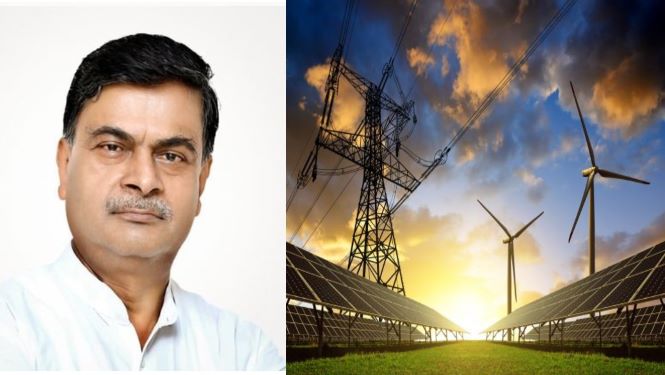

India’s renewable energy capacity has crossed the 80 GW mark, which includes 29.55 GW of solar energy and 36.37 GW wind power, according to Power Minister R K Singh in a written reply to the Parliament.
“The Government is regularly monitoring the progress being made to achieve the target of 175 GW by 2022. A total of 80.46 GW of renewable energy capacity has been installed in the country as on June 30, 2019, which includes 29.55 GW from solar and 36.37 GW from wind power,” Power and New & Renewable Energy Minister R K Singh said in a written reply to the Rajya Sabha.
As per India’s submission to the United Nations Framework Convention on Climate Change on Intended Nationally Determined Contribution (INDC), a cumulative electric power capacity of 40 percent from non-fossil fuel-based energy resources is to be installed by 2030. Accordingly, the government has set a target of installing renewable energy capacity of 175 GW by the year 2022, including 100 GW solar and 60 GW of wind energy, the minister said.
In a separate reply to the House, Singh said that solar power capacity addition was 5,525.98 MW in 2016-17, 9,362.63 MW in 2017-18 and 6,529.20 MW in 2018-19.
In another reply, the ministry also told the House that a total of 42 solar power parks with an aggregate capacity of around 23.40 GW have been approved by the government so far to facilitate achievement of 100 GW target by March 2022. Out of approved capacity of 23.40 GW, power purchase agreements (PPAs) have been signed for around 9.20 GW and out of this, around 6.40 GW of capacity has been commissioned in various solar parks as on June 30, 2019, he said.
The cumulative grid-connected installed solar power capacity in India is approaching the 30 GW mark sooner rather than later with the installed capacity at the end of May 2019, being 29,409 MW, RK Singh confirmed in a written response to the Parliament.
Problems for RE projects
The minister also informed the House that availability of land and power evacuation are two main constraints in setting up of solar parks. To address these issues, a new mode (Mode-7) has been introduced in the Solar Park scheme, allowing Solar Energy Corporation of India (SECI) to act as the Solar Power Park Developer (SPPD).
The SECI, with the assistance of the states, will make land available to successful bidders for setting up renewable energy projects and also get the external power evacuation infrastructure of the parks developed through External Transmission Development Agencies (ETDA) like Central Transmission Unit (CTU), State Transmission Units (STUs), he added.
24/7 Electricity
The government said Tuesday it is devising a consumer-centric electricity distribution plan to ensure round the clock power supply for all.
Power Minister R K Singh on Tuesday reviewed the Draft Distribution Perspective Plan for the power sector, the ministry said. The draft plan is the first ever plan at distribution level which has been prepared by the Central Electricity Authority (CEA) under the power ministry.
The ministry said that the efforts towards making a distribution plan are aimed at sustaining the goal of 24X7 uninterrupted power for all with increasing demand for electricity from consumers. The plan lays emphasis on 100 percent metering of all consumers and providing an electricity connection on demand.
Published with permission from Saur Energy and inputs from various agencies
India is undergoing a significant influx of urban migration and a reclassification of rural areas,…
India’s quest toward green hydrogen economy received a significant boost with a strategic MoU between…
A new report by S&P Global has revealed that India’s growing biofuels industry is emerging…
In a significant breakthrough for India’s renewable energy and dairy sectors, dairy major Amul has…
Renewable energy conglomerate Anaergia Inc, through its subsidiary, Anaergia S.r.l., entered into a contract with…
Reliance Industries Ltd (RIL) Chairman Mukesh Ambani has announced a massive ₹75,000 crore investment in…